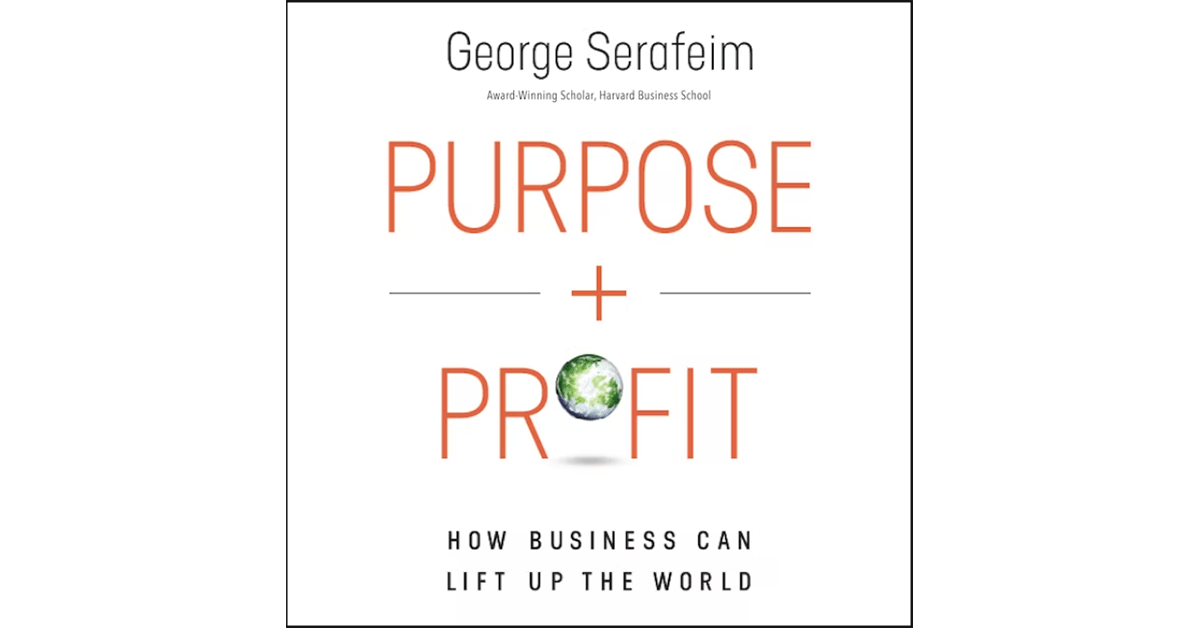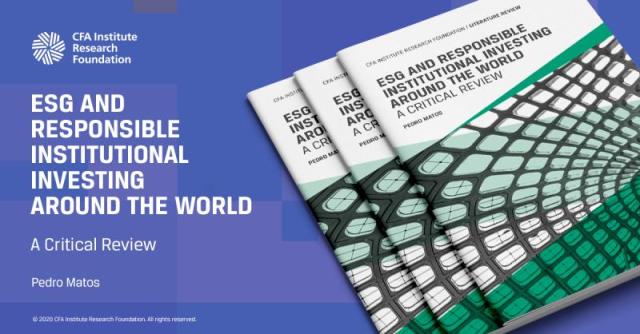[ad_1]
Purpose and Profit: How Business Can Lift up the World. 2022. George Serafeim. HarperCollins Leadership.
In Purpose and Profit: How Business Can Lift up the World, George Serafeim, the Charles M. Williams Professor of Business Administration at Harvard Business School, provides a roadmap and best practices for businesses to achieve the long-term competitive advantage that can emerge when they prioritize environmental, social, and corporate governance (ESG) goals, such as climate change mitigation, diversity and inclusion, and sustainability, alongside the pursuit of profit. The importance of ESG factors has been accelerated by the COVID-19 pandemic, making this book essential reading for all investors. Once considered “soft” and outside the scope of what a serious investor should be thinking about, ESG issues are now not only important in society but also critical in business. Today, it is incumbent on asset managers to incorporate all long-term drivers of value, including ESG factors, as part of their fiduciary duty to investors.
Over the past decade, Serafeim has found that purpose-driven firms that improve performance on material ESG issues outperform their competitors by more than 3% annually in terms of stock returns, based on a sample of more than 2,300 companies. In addition, based on a sample of 3,078 global companies, the author found that firms that responded to the COVID-19 pandemic with significant efforts to protect customers, employees, and suppliers outperformed their peers by about 2.2% in the one month covering the March 2020 stock market collapse.
Over the past five decades, since Milton Friedman argued in 1970 that the “business of business is business” and his agency theory was widely accepted, there has been an evolution on the importance of ESG issues. The stakeholder theory, which emerged in the 1980s, provided support for the ESG movement. Serafeim found that in the 1990s, firms with strong ESG performance received more pessimistic analyst recommendations than peer companies, because their sustainability initiatives were considered a waste of shareholder resources. By the end of 2008, however, this correlation was zero, and by the mid-2010s, firms with strong ESG performance attracted more positive analyst recommendations than other companies. The UN Principles for Responsible Investment (PRI) started in 2005, and by 2020, assets under management (AUM) by PRI signatories surpassed $100 trillion. This evolution included financial education; CFA Institute started to incorporate ESG topics into its curriculum in 2018 and more recently created the CFA Institute Certificate in ESG Investing program.
ESG investing started out with negative screening, which proved to have minimal positive impact. According to the Serafeim, companies need to understand which ESG issues are financially material in their industry and how to focus on them. Firms that improve their performance on nonmaterial ESG issues in their industry exhibited little performance differential from their competitors. Financially material ESG issues for commercial banks include access to finance for underserved populations, customer data privacy, incorporation of environmental risks in loans originated, and strong anti-corruption practices. For agricultural product companies, material ESG issues include greenhouse gas emissions, water management, the physical safety of employees, and crop-related risks emerging from climate change. Focusing on ESG issues that matter to a particular industry can make the difference between success and failure.
I found Serafeim’s most insightful example to be the $1.6 trillion Japanese Government Pension Investment Fund. Since this fund owns the “universe,” it has sought to make the universe more sustainable rather than attempting to outperform the universe. Since pension funds have long time horizons, they need the earth to be viable 100 years from now to be able to pay out their obligations. As “stewards of the commons,” the largest investors are important to sustainability, because they hold numerous positions across industries that face a significant number of material threats.
The final chapter is the most important one for the “Impact Generation,” which seeks alignment between values and work. Because alignment is not static, it might be appropriate to take a position at a currently misaligned company, provided one has the agency to bring about change, rather than a currently aligned company. It is the slope of alignment, rather than the current level of alignment, that determines the potential reward. The decision comes down to patience or one’s own personal discount rate.
If you liked this post, don’t forget to subscribe to the Enterprising Investor.
All posts are the opinion of the author. As such, they should not be construed as investment advice, nor do the opinions expressed necessarily reflect the views of CFA Institute or the author’s employer.
Professional Learning for CFA Institute Members
CFA Institute members are empowered to self-determine and self-report professional learning (PL) credits earned, including content on Enterprising Investor. Members can record credits easily using their online PL tracker.
[ad_2]
Image and article originally from blogs.cfainstitute.org. Read the original article here.


